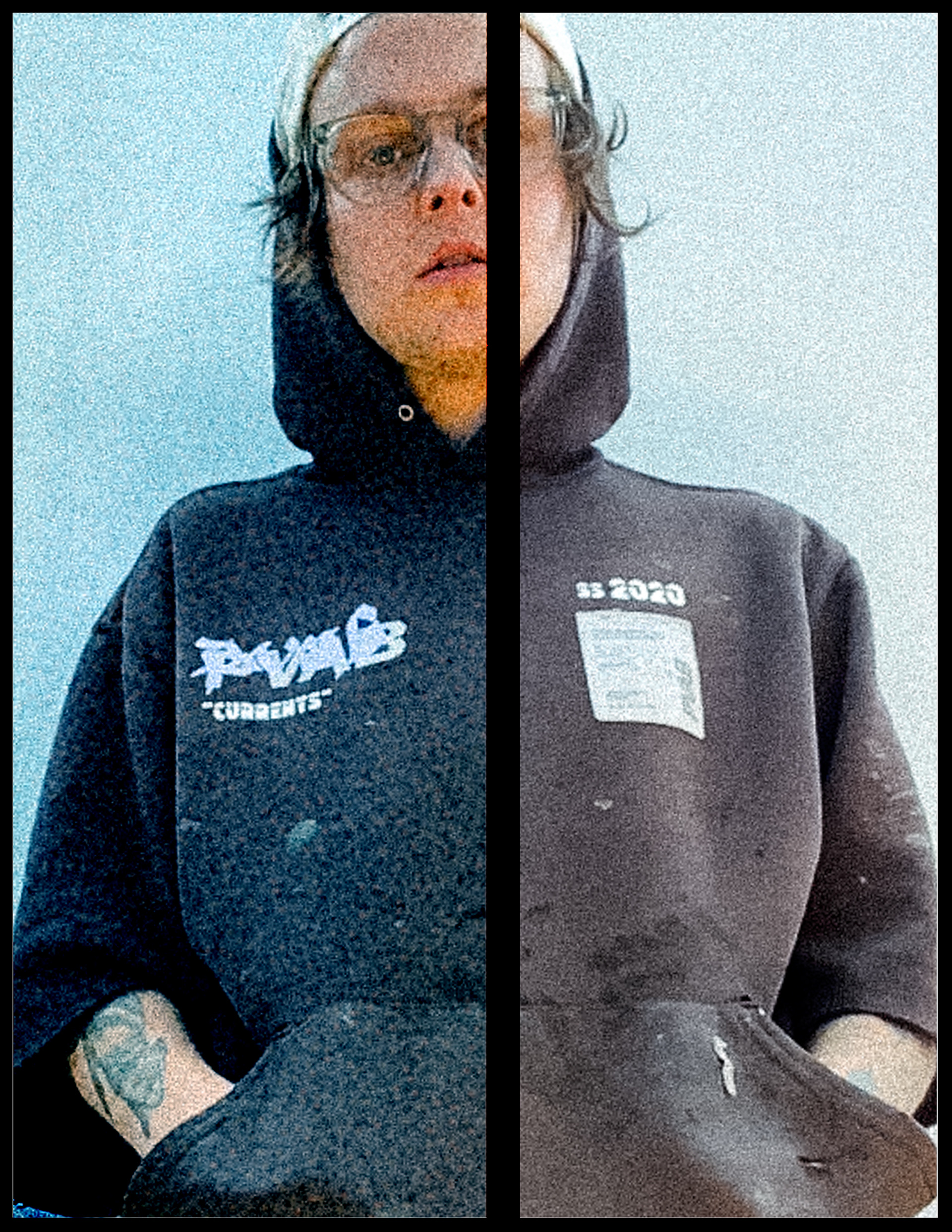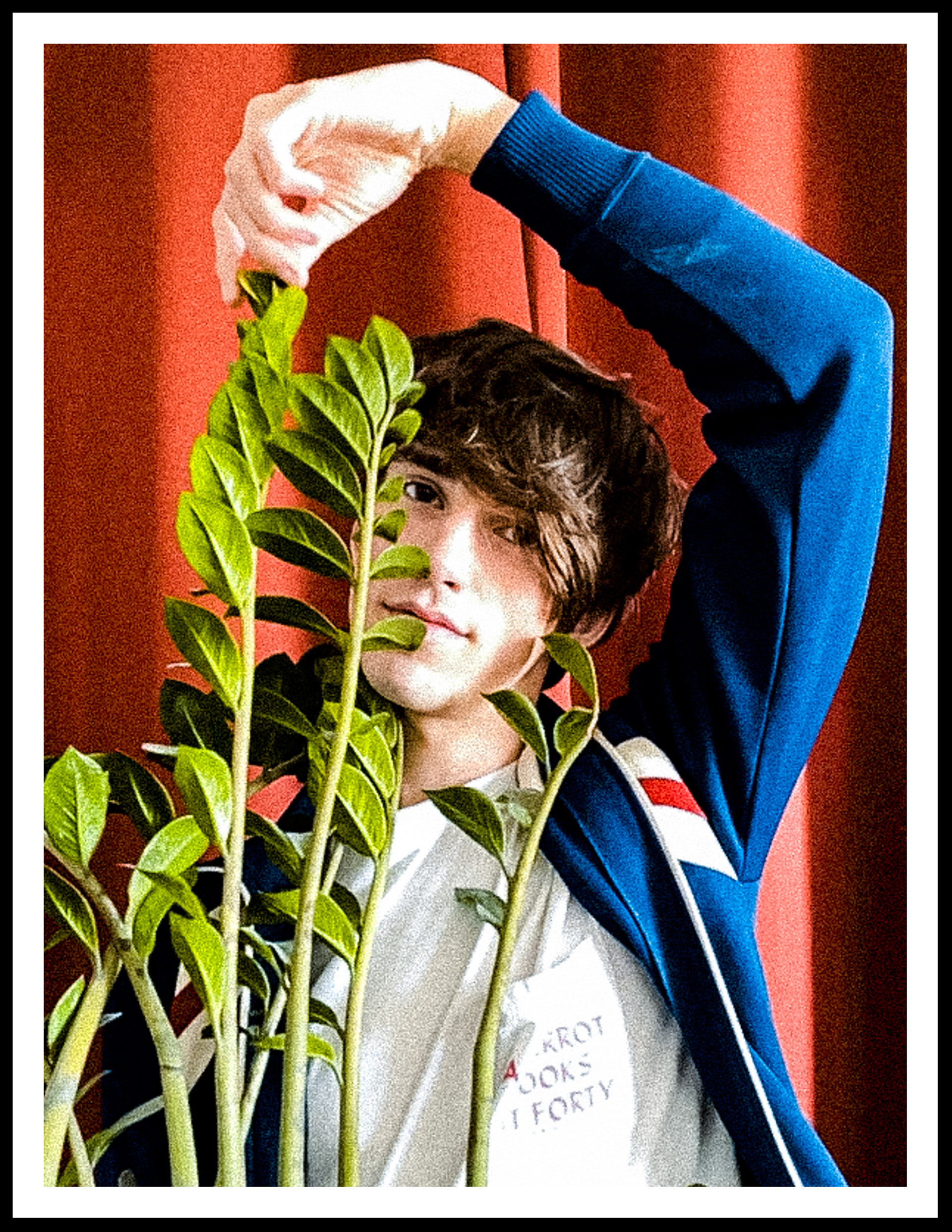"THAT'S THE FRAMEWORK PROJECT" 2020-2021
GUEST ARTIST: HIPPO CAMPUS
TOPIC: TRASH OR TREASURE
GUEST ARTIST: HIPPO CAMPUS
TOPIC: TRASH OR TREASURE
Rapid mass production of super cheap clothing. Price tags are low, environmental costs are high.
The first job I ever had was working at Forever 21. I was 18 and stoked to start making my own money. Day after day I would hide in the bathroom reading books because I was so tired of folding the same t-shirts over and over again. I quit after three months. I'm glad I did.
Forever 21 received an overall score of D+ from the 2017 Ethical Fashion Report, MANY of Forever 21's clothing items are clothes are made from synthetic fabrics, and they are one of the only fast fashion brands to still refuse to ensure safe working conditions in supplier factories. When I left Forever 21, I did (and still do) my best to stay far away from fast fashion. Yes, the shirt is only $19.99, but is it really worth it knowing the person who made it was paid $.19?
The first job I ever had was working at Forever 21. I was 18 and stoked to start making my own money. Day after day I would hide in the bathroom reading books because I was so tired of folding the same t-shirts over and over again. I quit after three months. I'm glad I did.
Forever 21 received an overall score of D+ from the 2017 Ethical Fashion Report, MANY of Forever 21's clothing items are clothes are made from synthetic fabrics, and they are one of the only fast fashion brands to still refuse to ensure safe working conditions in supplier factories. When I left Forever 21, I did (and still do) my best to stay far away from fast fashion. Yes, the shirt is only $19.99, but is it really worth it knowing the person who made it was paid $.19?
In an increasingly environmentally aware society, there is high criticism of fast fashion due to its negative environmental impact from the use of toxic chemicals and textile waste. Consumers want to see action, not fancy words. People see right through the greenwashing as companies fail to meet ends with grand environmental marketing plans. Here are some of the incredibly negative impacts stores like Forever 21, Zara and H&M have on the world.
WATER
On average, it takes 2700 liters of water to produce ONE cotton t-shirt. Going back to previous FRAMEWORK episodes, we know how detrimental water shortage is to our climate. The water is diverted from natural river ecosystems, which can endanger numerous species. More importantly, those species are important to keeping our food supply chains healthy. When we divert too much water, we could run out of food. It ain't worth it for a shirt you'll wear for one season before it rips.
LANDFILLS
The U.S. alone sends about 21 billion pounds of textile waste to landfills every year. People love to shop for fun and the things they buy often end up in the ocean.
PLASTIC WASTE
Again, many cheap clothing items are made from synthetic fabrics; which is a fancy word for plastic. Unlike cotton, which is biodegradable, plastic is toxic to our environment. When discarded, plastic clothes will poison our soil and water sources for more than 500 years. The production of synthetic fabrics releases nitrous oxide which is 310 times stronger than carbon dioxide as a greenhouse gas.
ONLINE SHOPPING
In a study: ‘Online shopping and home working’ scientists talk about the impacts of online shopping habits. What is actually a positive incentive to reduce CO2 emissions (shopping online instead of driving to the shops) is cancelled out by the negative environmental impact of returned packages. A reduction in greenhouse gases is only achieved if an online order replaces three and a half actual shopping trips by car, or if 25 products are delivered simultaneously OR if the online purchase saves the customer a 50+ mile journey.
Again, many cheap clothing items are made from synthetic fabrics; which is a fancy word for plastic. Unlike cotton, which is biodegradable, plastic is toxic to our environment. When discarded, plastic clothes will poison our soil and water sources for more than 500 years. The production of synthetic fabrics releases nitrous oxide which is 310 times stronger than carbon dioxide as a greenhouse gas.
ONLINE SHOPPING
In a study: ‘Online shopping and home working’ scientists talk about the impacts of online shopping habits. What is actually a positive incentive to reduce CO2 emissions (shopping online instead of driving to the shops) is cancelled out by the negative environmental impact of returned packages. A reduction in greenhouse gases is only achieved if an online order replaces three and a half actual shopping trips by car, or if 25 products are delivered simultaneously OR if the online purchase saves the customer a 50+ mile journey.


Even though this idea has been around forever, secondhand shopping has exploded in popularity over the last decade. Unleash your creativity. Be unique as hell. You have to hunt and think outside the box when you shop secondhand. Each item has a story and mysterious history. Trends cycle in and out of style, which means there thrift stores are chock full of treasures that are good for the environment and great for your aesthetic. You won't be wearing the same logo t-shirt that H&M has printed 100,000 of this summer. Here are some other benefits to second hand.
BIODIVERSITY
Healthy biodiversity is dependent on local water supplies. It is also important in maintaining healthy soil, which can sequester carbon. By avoiding brand new cotton clothing - you are saving water.
TRASH
Buying clothes from a thrift store prevents a garment from heading to the landfill. Some cities such as San Francisco, will collect used textiles such as rags, holey socks, and ripped clothes and recycle them for you. These are then downcycled into non clothes such as rags or insulation. Reduce, reuse, recycle.
LESS PLASTIC WASTE
A lot of energy goes into making clothing. From the factory machines creating the product to shipping it across the world (or country) to the store we buy it from, we save a lot of energy by buying from our local thrift store. Every time we do this, we prevent the creation of more plastic based clothing.
ETHICAL
Buying an item in the thrift store reduces both new items being produced AND the need for someone to produce them. Most of the more affordable clothing brands utilize unethical and abusive production techniques. Women, children, and impoverished people are usually at the highest risk for worker rights violations--low wages, long hours, poor working conditions, etc.
NOT JUST CLOTHING
You can buy appliances, house goods and furniture second hand. I personally love to thrift ceramic plates and pots for my plants. Also the frames for these FRAMEWORK episodes! Everything has an environmental footprint, so the more we reuse and re-purpose as a society, the more we can help our planet. Not to mention helping your wallet.
Healthy biodiversity is dependent on local water supplies. It is also important in maintaining healthy soil, which can sequester carbon. By avoiding brand new cotton clothing - you are saving water.
TRASH
Buying clothes from a thrift store prevents a garment from heading to the landfill. Some cities such as San Francisco, will collect used textiles such as rags, holey socks, and ripped clothes and recycle them for you. These are then downcycled into non clothes such as rags or insulation. Reduce, reuse, recycle.
LESS PLASTIC WASTE
A lot of energy goes into making clothing. From the factory machines creating the product to shipping it across the world (or country) to the store we buy it from, we save a lot of energy by buying from our local thrift store. Every time we do this, we prevent the creation of more plastic based clothing.
ETHICAL
Buying an item in the thrift store reduces both new items being produced AND the need for someone to produce them. Most of the more affordable clothing brands utilize unethical and abusive production techniques. Women, children, and impoverished people are usually at the highest risk for worker rights violations--low wages, long hours, poor working conditions, etc.
NOT JUST CLOTHING
You can buy appliances, house goods and furniture second hand. I personally love to thrift ceramic plates and pots for my plants. Also the frames for these FRAMEWORK episodes! Everything has an environmental footprint, so the more we reuse and re-purpose as a society, the more we can help our planet. Not to mention helping your wallet.
The boys of Hippo Campus are huge thrifters. Around the USA, while on the road, we stop and scour for things to wear on days off, on stage or for Halloween. Sometimes we'll trade clothes of sell things back to certain stores around the country. We've all developed favorite spots and hit them up every time we pass through certain cities. Always exciting not knowing what unique piece you're going to stumble upon. Most of my favorite clothing items have been discovered wandering a thrift store.
Below are some real gems.
Relic Vintage - SF
Wasteland - LA
Avalon - LA
Rewind - Minneapolis
Goldmine - Denver
Lucky - Seattle
Ragtime - Asheville
Vault Collective - Burlington
Chains:
Crossroads (you can sell too!)
Buffalo Exchange (you can sell too!)
Value Village
Online:
Etsy Vintage
ThredUP
Previous Abandonment